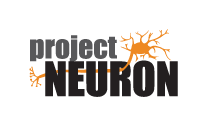Curriculum Units
We have developed curriculum units that link biology research performed by scientists at the University of Illinois at Urbana-Champaign with national science education standards. All units are based on a central driving question that provides a contextual framework for the lessons and a core investigative experiment. Each unit contains 5-9 lessons and are designed to be completed in 2-3 weeks, although individual lessons can be adapted to fit into existing curricula. All lesson plans address national science education standards, contain background on scientific content and pedagogical practices, and include assessments as part of in-class activities and homework.
Pre- and post-assessments on Google Drive are available for educators upon request (please include your name, district/school, and intended use in the request).
 Project NEURON content by Impact on Science Education is licensed under a Creative Commons Attribution-NonCommercial-ShareAlike 4.0 International License.
Project NEURON content by Impact on Science Education is licensed under a Creative Commons Attribution-NonCommercial-ShareAlike 4.0 International License.
-
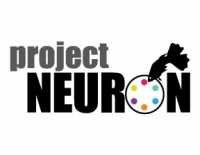
Do you see what I see?
Light, sight, and natural selectionStudents are engaged throughout this unit with various activities that explore optical illusions, color perception, color-blindness, and diversity of vision across species. After examining the physical properties of light and the structure and function of the mammalian eye, students apply their knowledge in designing an experiment to test color preference in guppies. These experimental results are tied into our very popular Guppy Game (featured in NSTA’s The Science Teacher) in which students role-play guppies to experience how color and habitat affect survival and reproduction as a part of natural and sexual selection.
This unit connects to research led by Dr. Becky Fuller at the University of Illinois.
Learn more about these lessons in the Do you see what I see? unit:
-
Lesson 1: What do I see?
-
Lesson 2: How does biology affect perception?
-
Lesson 3: How does the environment affect perception?
-
Lesson 4: What are color and light?
-
Lesson 5: What is a fish's favorite color?
-
Lesson 6: Why do guppies have favorite colors?
-
Lesson 7: What do you see?
-
-
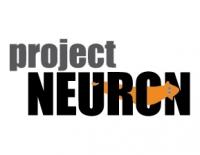
What can I learn from worms?
Regeneration, stem cells, and modelsThis unit is grounded in a cost-effective and student-driven investigation that teachers love! Intrigued by the fascinating behavior of regeneration, students examine the process of cellular division and visualize the process of planarian flatworm regeneration with fluorescent images from the University of Illinois. While students collect and analyze their own experimental data, students use computer models to simulate how DNA and protein affect behavior and explore applications of what they’ve learned to disease and stem cell research.
This unit focuses on basic science research being done by Dr. Phil Newmark and members of his laboratory at the University of Illinois.
Learn more about these lessons in the What can I learn from worms? unit:
-
Lesson 1: What is regeneration?
-
Lesson 2: How do planarians react to their environment?
-
Lesson 3: How do planarians regenerate?
-
Lesson 4: What happens in the worms' cells during regeneration?
-
Lesson 5: How can we see the worms' cells during regeneration?
-
Lesson 6: How do DNA and protein determine behavior?
-
Lesson 7: What does planarian regeneration tell us about human regeneration?
-
-
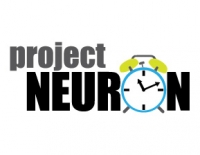
What makes me tick...tock?
Circadian rhythms, genetics, and healthTeachers who use our materials say that students think this is one of our most engaging units! Through the context of sleep, students examine how genes and proteins affect behavior using interactive hands-on and computer activities. Environmental effects on behavior and gene expression are introduced through a game based on the cutting-edge research of epigenetics. Full of real-world examples of altered sleep cycles such as jet-lag and shift work, this unit includes a student-driven investigative case study and summative debate in which students prepare scientific arguments based on what they have learned.
This unit is connected to basic science research being done by Dr. Megan Mahoney and members of her laboratory.
Learn more about these lessons in the What makes me tick...tock? unit:
-
Lesson 1: What is a circadian rhythm?
-
Lesson 2: Why do scientists study fruit flies to understand what makes us "tick"?
-
Lesson 3: How can genetics change your clock?
-
Lesson 4: Tick tock...Broken clock
-
Lesson 5: How do environment and modern society influence our rhythms?
-
Lesson 6: What happens to humans when normal rhythms are disrupted?
-
Lesson 7: How can epigenetics change your clock?
-
Lesson 8: When should the school day begin?
-
-
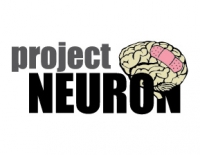
Why dread a bump on the head?
The neuroscience of traumatic brain injuryTeachers have the option of linking this unit to our extensive and engaging computer game The Golden Hour in which the player makes decisions on the diagnosis and treatment of a patient with a Traumatic Brain Injury (TBI). In this unit, students gain a greater understanding of the brain at the macro level—through a sheep brain dissection and CT scan interpretations—and the cellular level while examining necrosis and apoptosis (types of cell death). Finally, students explore real-world data in a graphing exercise based on sports injuries and create their own summative and educational resource in a class-wide “zine” project.
A stand alone set of teacher materials have also been developed for those who choose to teach only a short unit based on The Golden Hour game.
Learn more about these lessons in the Why dread a bump on the head? unit:
-
Lesson 1: What is traumatic brain injury?
-
Lesson 2: What does the brain look like?
-
Lesson 3: How does a CT scan help diagnose TBI?
-
Lesson 4: How to build a neuron
-
Lesson 5: What happens to neurons after TBI?
-
Lesson 6: Exploring the data behind brain injury
-
Lesson 7: What can we tell others about TBI?
-
-
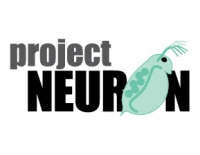
What changes our minds? (Toxicants)
Toxicants, exposure, and the environmentIntroduced through video interviews of researchers on the University of Illinois campus, this unit concentrates on the role of the environment in exposure to chemicals and their effects. Students play a board game that demonstrates the biomagnification of toxicants in food chains and develop a hands-on investigation on the toxic effects of certain alga on the waterflea Daphnia. Students gain insight into their exposure to toxicants while developing a standard curve for chemical analysis and learn about cell structures through the context of various toxicants and effect on cellular function in a card-matching case study activity. The unit wraps up in a summative presentation or debate which allows students to cultivate a balanced perspective on the benefits and costs of chemicals.
The activities in this unit were inspired by research conducted by Dr. Susan Schantz and Dr. Bettina Francis.
Learn more about these lessons in the What changes our minds? (Toxicants) unit:
-
Lesson 1: What changes our minds?
-
Lesson 2: How do we define what changes our minds?
-
Lesson 3: How does the environment magnify our exposure to toxicants?
-
Lesson 4: Where are toxicants and how much are we exposed?
-
Lesson 5: How can an environmental toxicant affect Daphnia?
-
Lesson 6: Toxicants in action: What changes the cell?
-
Lesson 7: If it's harmful, why do we use it?
-
-
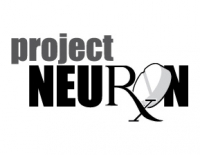
What changes our minds? (Drugs)
Foods, drugs, and the brainThis unit develops an in-depth understanding of the nervous system within the context of the effects of various foods and drugs. After being introduced to the subject by video interviews with scientists from the University of Illinois, students develop a hands-on experiment on the effects of various energy drink ingredients on planarian flatworms and use a digital activity to investigate the effects of estrogens on how rats learn. Interactive role-playing activities allow students to understand how chemicals affect neurons and cell communication at a cellular level, and a summative discussion on the FDA regulation of drugs helps students apply their knowledge in scientific arguments.
The lessons focus on research by Dr. Joshua Gulley, Dr. Paul Gold, and Dr. Donna Korol.
Learn more about these lessons in the What changes our minds? (Drugs) unit:
-
Lesson 1: What changes our minds?
-
Lesson 2: How do we define what changes our minds?
-
Lesson 3: How do drugs affect planarians?
-
Lesson 4: How does an estrogen affect a rat's mind?
-
Lesson 5: What are the effects of drugs on the nervous system?
-
Lesson 6: How do neurons communicate?
-
Lesson 7: How do drugs affect neuron communication?
-
Lesson 8: How can animal models reflect the effects of drugs on the nervous system?
-
Lesson 9: When should the FDA regulate a drug?
-
-
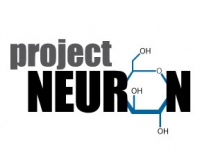
Food for thought: What fuels us?
Glucose, the endocrine system, and healthBy investigating the question “What fuels us?”, students integrate bodily and metabolic phenomena on a cellular and systemic level. Focusing on glucose, the endocrine system, and health, this unit provides students with a variety of activities and lessons that require an active role by the students. Students calculate and draw a disproportionate “glunculus,” develop models and provide medical diagnoses and treatments to scenarios, construct adrenaline models using scientific sources, plan and perform experiments in a computer program that uses rats as a model organism, and finally, evaluate articles to develop a PSA on the risks and preventative nature of Type II Diabetes.
This unit connects to research led by Dr. Paul Gold at the University of Illinois (now at Syracuse University).
Learn more about these lessons in the Food for thought: What fuels us? unit:
-
Lesson 1: Why is glucose important for the body and brain?
-
Lesson 2: How are glucose levels regulated in the body?
-
Lesson 3: How does adrenalin affect the body and the brain?
-
Lesson 4: How does glucose affect memory in aging populations?
-
Lesson 5: How does glucose dysregulation lead to disease?
-
-
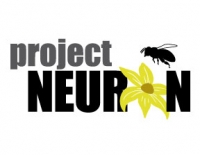
What makes honey bees work together?
How genes and environment affect behaviorThis unit engages students in lessons that explore how genetics and the environment influence animal behavior on scales ranging from gene expression in an individual to evolution of a species. Student learning is facilitated from various genres of text including opinion articles and adapted primary literature, and it also features three interview videos with honey bee researchers. Students do a variety of scientific practices such as analyzing gene expression data and using models of hive thermoregulation as they build knowledge to answer the driving question in a meaningful way.
This unit connects to research done by Dr. Gene Robinson and members of the Robinson Lab group at the University of Illinois.
Learn more about these lessons in the What makes honey bees work together? unit:
-
Lesson 1: What do honey bees do?
-
Lesson 2: Why do honey bees have different jobs?
-
Lesson 3: How do honey bees heat the hive?
-
Lesson 4: What is the genetic basis for the evolution of eusocial behaviors?
-
-
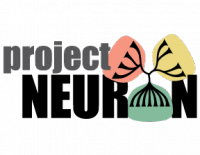
How do small things make a big difference?
Microbes, ecology, and the tree of lifeStudents engage in a series of inquiry-based activities in this unit, to learn about microbes from the three domains of life (eukaryotes, bacteria, and archaea). Beginning with an exploration of the technological advances that led to the current three-domain tree of life, students investigate how Carl Woese and research partners used molecular methods to discover the Archaea domain. After observing live microbial communities from a Winogradsky column, students develop a model of the matter and energy cycles within ecosystems that can be applied to biological communities, micro or macro. Through reading adapted scientific articles, students develop science literacy skills and discover the critical role of microbial communities in human health and development. Finally, students model the stability and change of these microbial ecosystems by analyzing published data on the effects of antibiotics on the native microbes of the human microbiome.
This unit connects to research conducted by Dr. Rachel Whitaker and members of the Whitaker Lab group at the University of Illinois.
Learn more about these lessons in the How do small things make a big difference? unit:
-
Lesson 1: How did the tree of life change through history?
-
Lesson 2: What is the current tree of life model?
-
Lesson 3: What are microbes?
-
Lesson 4: What does a microbial ecosystem look like?
-
Lesson 5: How do microbes interact with humans?
-
Lesson 6: What can happen when my microbiome is disturbed?
-

